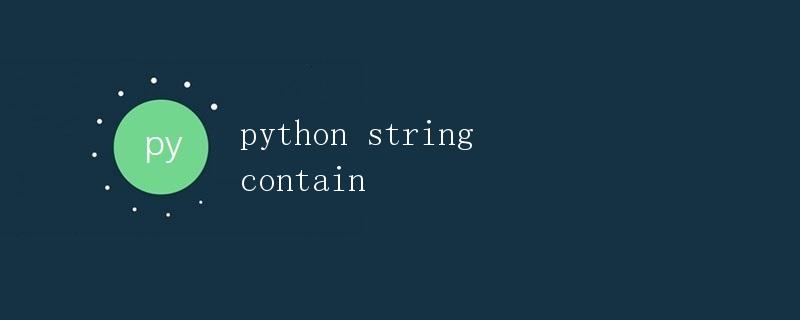python string contain字符串包含

在Python中,我们经常需要检查一个字符串是否包含另一个字符串。这在处理文本数据、搜索关键字或匹配模式时非常有用。本文将介绍在Python中如何判断一个字符串是否包含另一个字符串。
1. 使用in关键字
最简单的方法是使用Python的in关键字来判断一个字符串是否包含另一个字符串。例如:
str1 = "hello world"
str2 = "world"
if str2 in str1:
print("str1包含str2")
else:
print("str1不包含str2")
运行结果:
str1包含str2
如上述示例所示,我们可以通过in关键字来检查一个字符串是否包含另一个字符串。
2. 使用find方法
另一种方法是使用字符串对象的find方法。该方法返回子字符串在主字符串中的索引,如果子字符串不存在,则返回-1。例如:
str1 = "hello world"
str2 = "world"
if str1.find(str2) != -1:
print("str1包含str2")
else:
print("str1不包含str2")
运行结果:
str1包含str2
通过find方法,我们可以检查一个字符串是否包含另一个字符串,并获取子字符串在主字符串中的位置。
3. 使用index方法
与find方法类似,index方法也可以用来检查一个字符串是否包含另一个字符串。不同之处在于,index方法在子字符串不存在时会抛出异常。例如:
str1 = "hello world"
str2 = "world"
try:
str1.index(str2)
print("str1包含str2")
except ValueError:
print("str1不包含str2")
运行结果:
str1包含str2
通过index方法,我们可以检查一个字符串是否包含另一个字符串,并且可以处理子字符串不存在的情况。
4. 使用正则表达式
如果需要进行更复杂的模式匹配,可以使用Python的re模块来处理正则表达式。例如,我们可以使用re.search方法来检查一个字符串是否包含特定模式。例如:
import re
str1 = "hello world"
pattern = "world"
if re.search(pattern, str1):
print("str1包含pattern")
else:
print("str1不包含pattern")
运行结果:
str1包含pattern
通过正则表达式,我们可以实现更灵活的字符串包含检查,适用于处理更复杂的模式匹配需求。
结论
在Python中,我们可以使用多种方法来判断一个字符串是否包含另一个字符串,包括使用in关键字、find方法、index方法以及正则表达式。根据具体的需求和场景,选择合适的方法能够更高效地实现字符串包含的检查。
 极客教程
极客教程